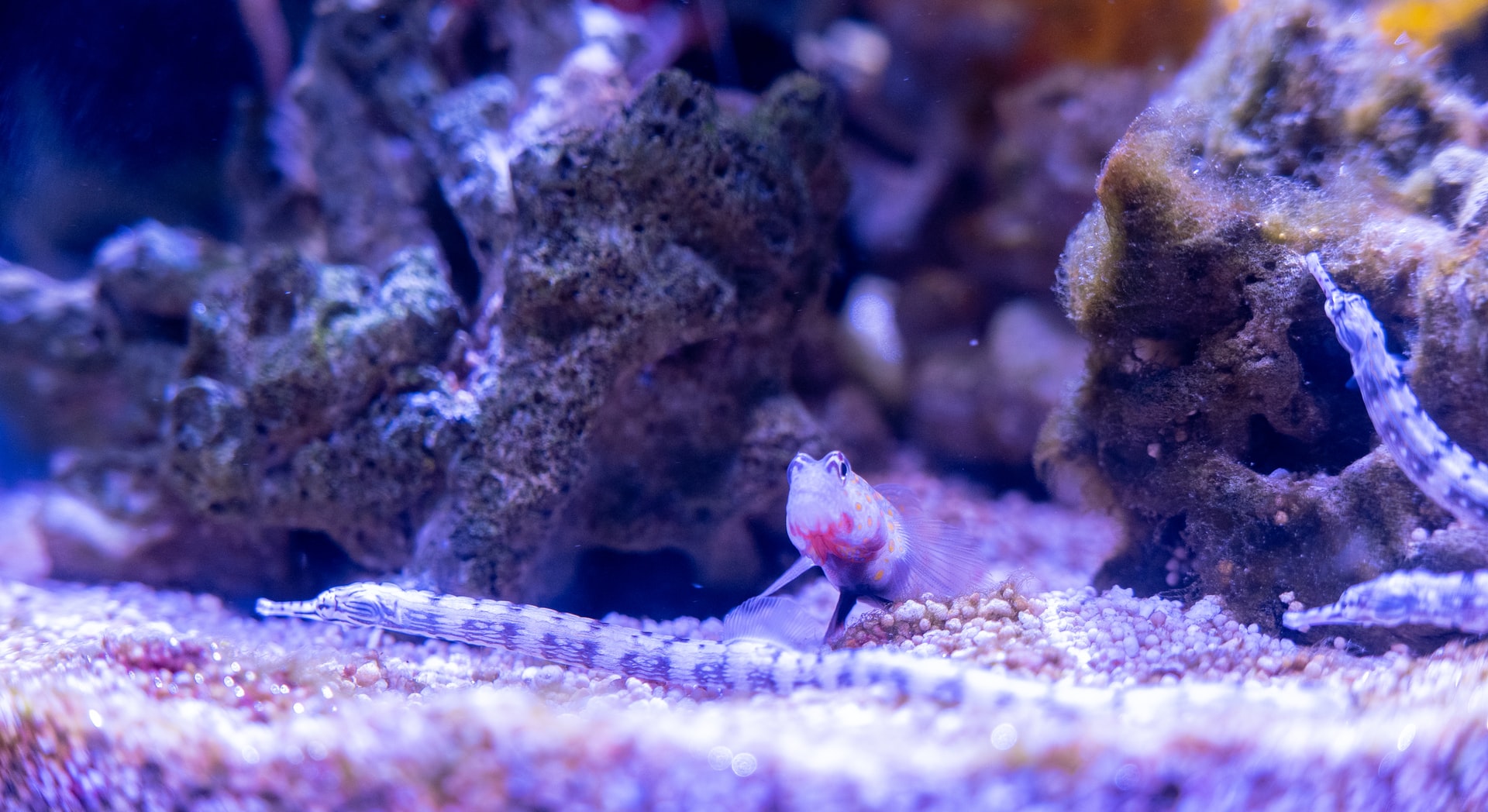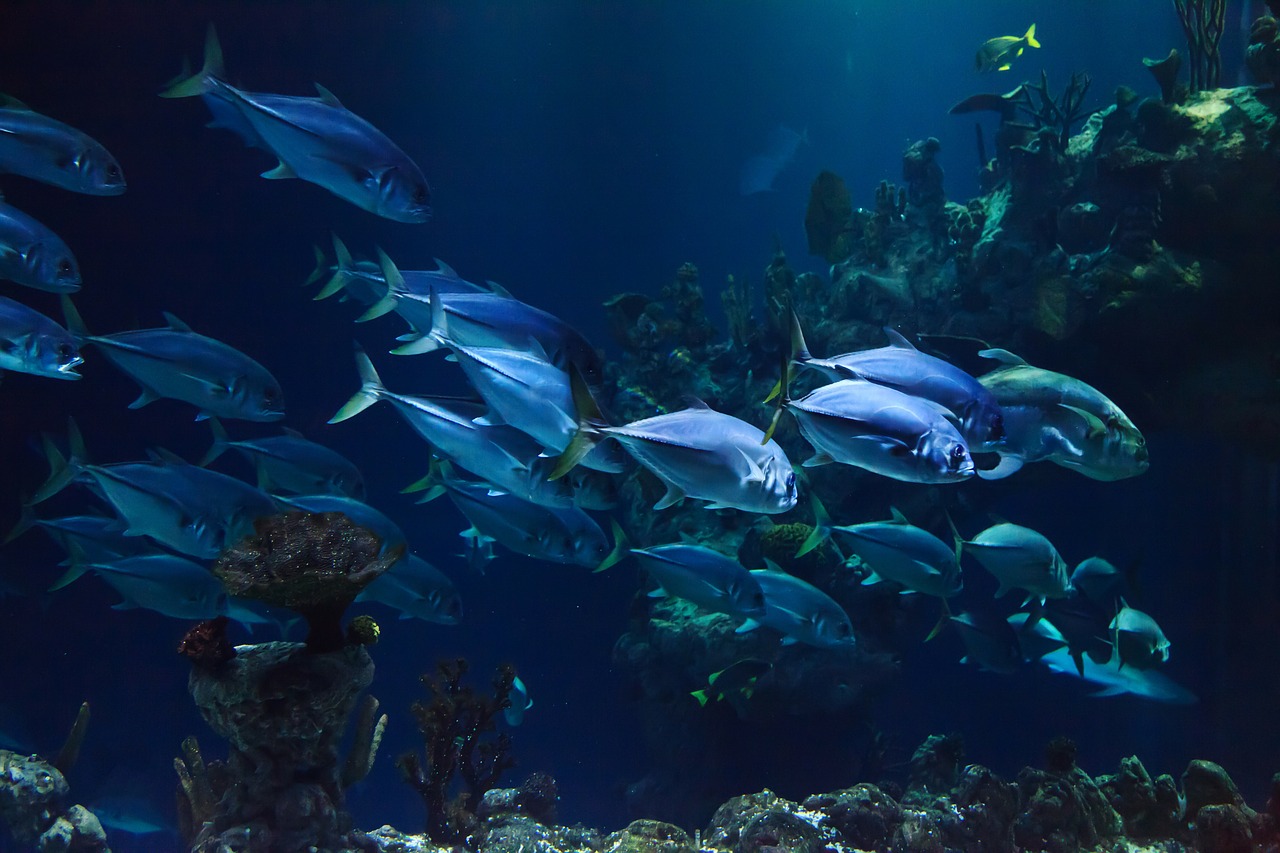The Chinese algae-eater is one of the best fish I have found for cleaning the inside of your tank. This little guy will work feverishly around the clock to get rid of algae on your tank sides and decorations.
Keeping the Chinese algae-eater is easy and he is compatible with most other fresh water fish. He does like clean water conditions and to have plenty of water circulation and aeration. It is best to introduce the fish into an established tank (so there will be algae to eat) and you may want to limit yourself to 1 per tank as adults can become aggressive towards each other.
In addition to algae, this fish will eat live plants so watch out for your decorative live plants if you have any. You can also feed him spinach and plant foods and he may also eat fish food that has sunk to the bottom. If your tanks are anything like mine, there will be plenty of algae so you won’t have to worry if he is going hungry! The Chinese algae eater can is usually about 2 1’2” long when you first get him but he can grow up to 10”!
Believe it or not, it is possible to spawn these useful fish in your tank. Find out the details in the article below by William Berg
Title: Spawning the Chinese Algae-eater
And one day there were fry… Spawning the Chinese Algae-eater (Gyrinocheilus aymonieri)
By William Berg of Sweden, for http://www.aquaticcommunity.com
Gyrinocheilus aymonieri Common name: Chinese algae-eater Family: Gyrinocheilidae (Algae eaters) Order: Cypriniformes (carps) Class: Actinopterygii (ray-finned fishes) Max size: 30 cm/ 12 inches Water conditions: pH range: 6.0 – 8.0, temperature 25 – 28°C/ 77-82°F
I would like to say a few words about one of the bigger surprises I’ve had as an aquarist. A few years ago I was cleaning out a 50 gallon holding tank in which I kept fishes that were going to a new aquarium when the new aquarium was ready. I also used it for keeping fish I didn’t know what else to do with. At this time this aquarium was home to twelve blue discus of about 10 cm, and four albino Chinese algae-eaters that were about 20 cm. The aquarium was overgrown with lots of C. Demersum since it had been neglected a little during the previous months. Now the time had come to clean this aquarium and try to weed out the jungle that had formed. To my big surprise I found a small (1.5 – 2cm) Chinese algae-eater fry. After looking around a little more I found a total of seven fry. I stopped the cleaning and left the aquarium as it was, since the water quality was good and I didn’t want to change too much. I didn’t see any reason to move the fry since they seemed big enough to be safe from the discus which I was moving to a 120 gallon Amazon tank in a few days anyway.
The fry survived and grew relatively fast on a diet of what they could find in the well-planted aquarium, and boiled lettuce. But I never got the parents to spawn again, and the fry themselves never spawned either. However I would like to say a few words about how the Chinese algae-eaters had been kept before the spawning, and which waters they spawned in, to see if I can help anyone else have success where I failed – to breed Chinese algae-eaters and figure out what triggers them to breed.
When I found the fry their parents had been in the holding tank for about 2-3 months. Before that I had kept them in a 50 gallon tank which was heavily circulated and contained very few plants. Temperature was 25°C/ 77°F. They were kept with clown loaches and various barbs. I’ve been wondering if the fact that they were kept in a heavily circulated aquarium and then moved to an aquarium with close to no circulation and warmer water (28°C/ 82°F) may have simulated a natural change in conditions that precedes spawning.
The breeding tank was as I said before, heavily planted, and had little or no circulation at all, due to the vegetation. The water was old and clean. Dh about 4. I can’t say the exact water conditions as I don’t know exactly when the spawning took place. However the water conditions had been relatively stable and it is reasonably safe to assume that the stated water conditions are correct.
The Chinese algae-eaters had been fed a varied diet which consisted mainly of boiled lettuce and broccoli, Hikari sinking algae wafers, and shrimps. They also ate the leftovers from the food I gave the barbs and loaches, which consisted mainly of different frozen foods.
Sexing the fishes I assume is simple. I believe it’s done in the same way as Corydoras catfishes. Some fish have much broader bodies and I assume them to be females; males are more slender especially if well fed.
Getting the fish into spawning condition seems to be quite simple if they are fed a good diet. However the problem seems to be triggering them to spawn. As I said, I never got them to spawn again. Maybe you will have better luck!
About the author:
Article is written for aquaticcommunity.com by William Berg. William Berg has 20 years of aquarium experience and is the admin at http://www.aquaticcommunity.com











